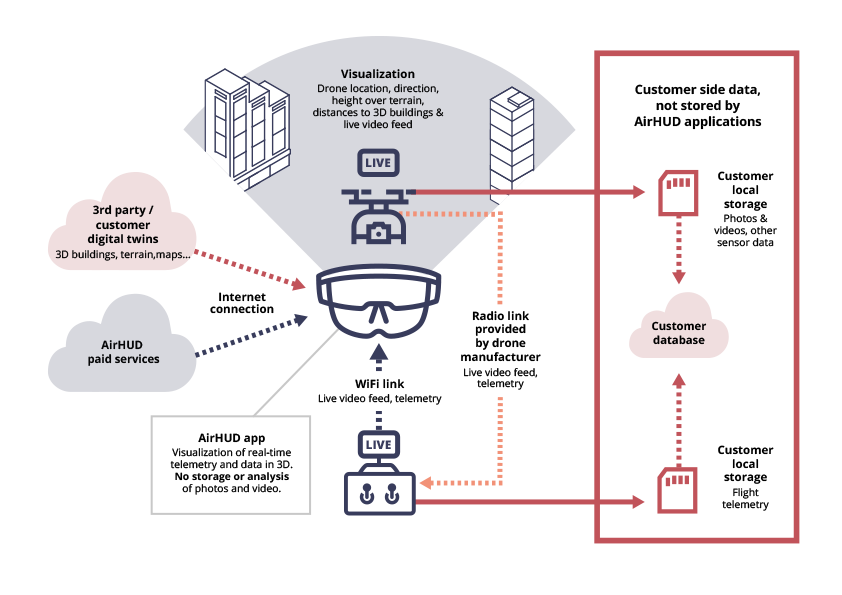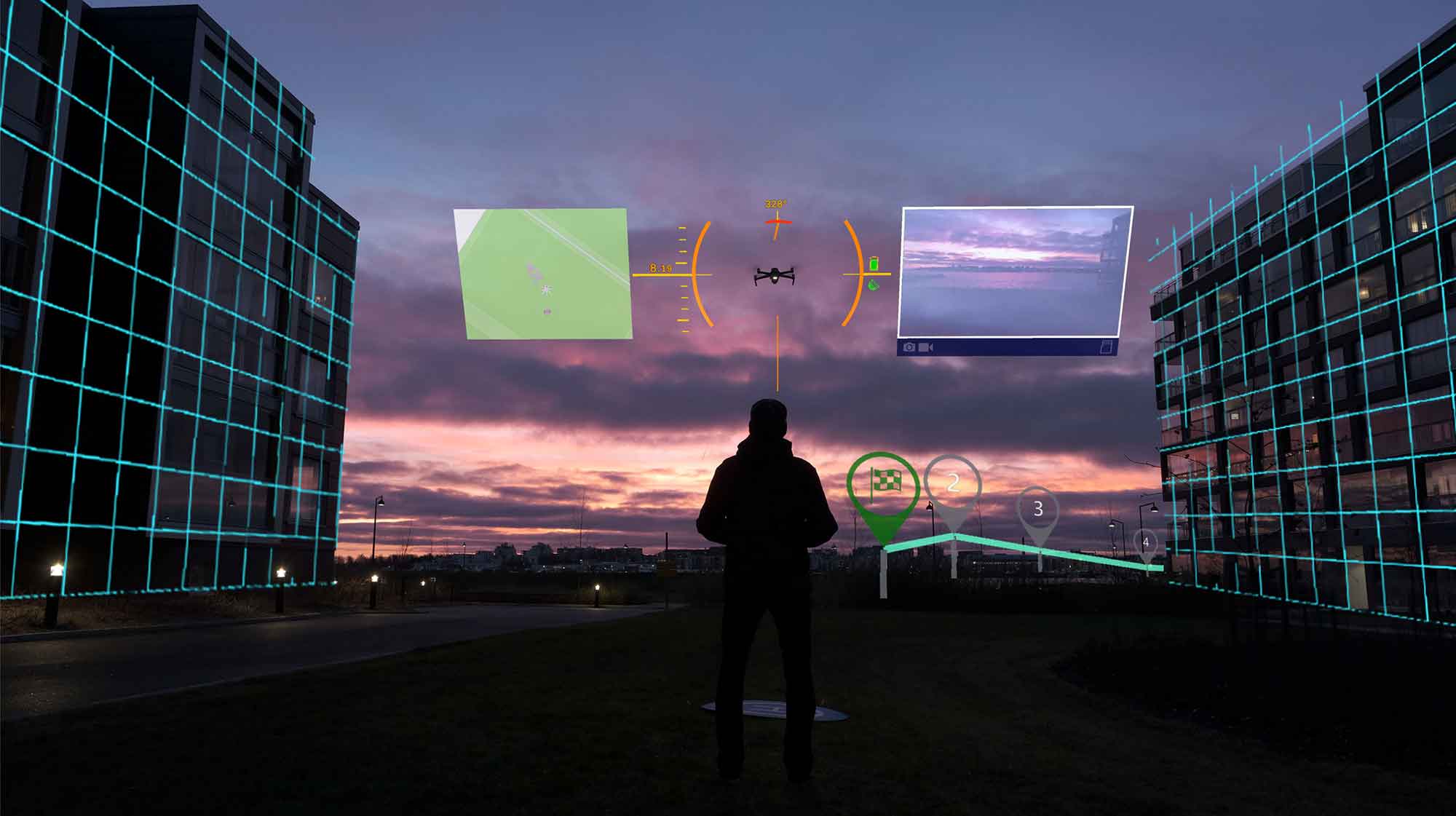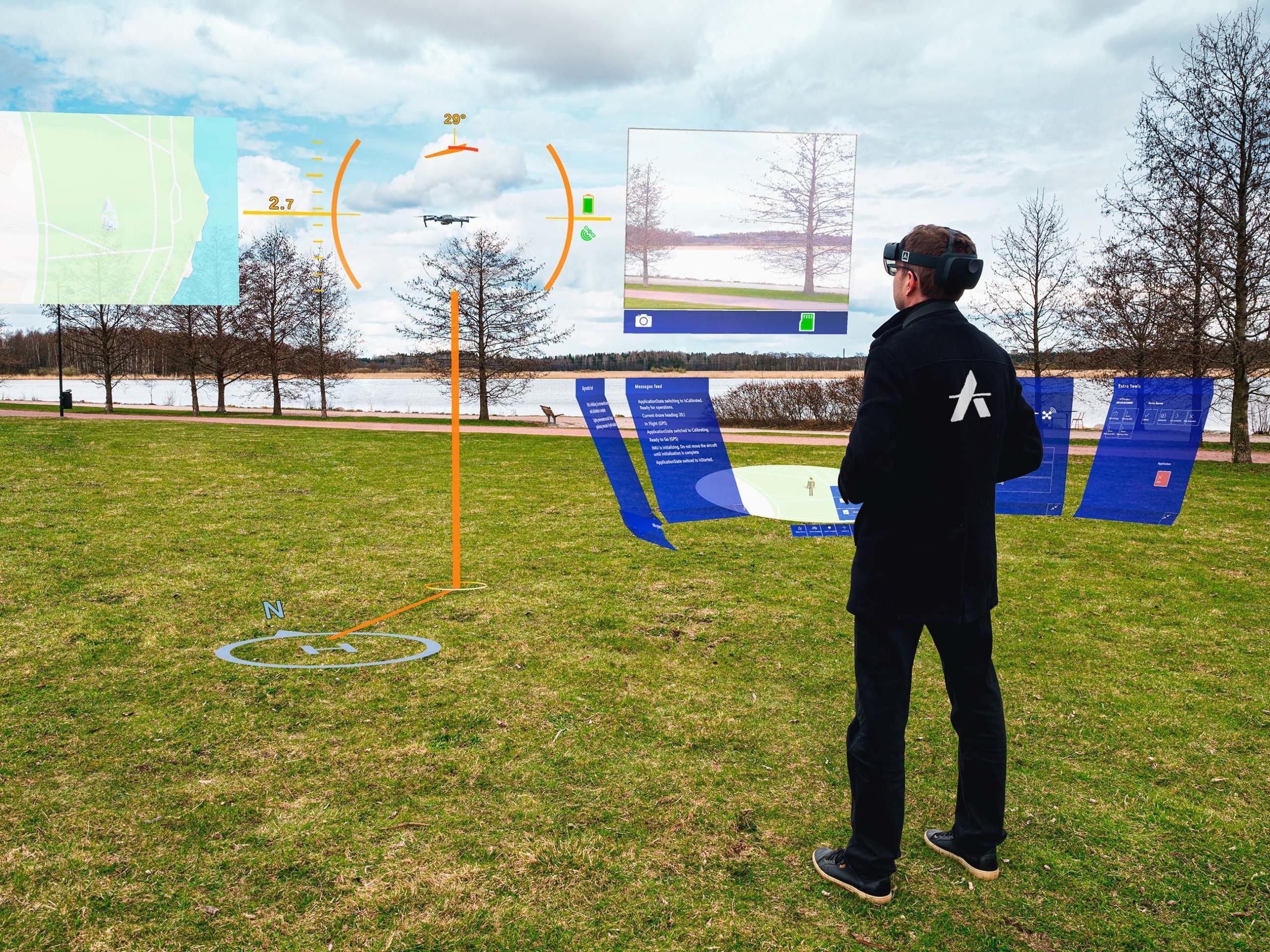Customization and control
You have the ability to customise and control the heads-up display (HUD) on your drone to suit your specific needs and preferences. Settings within the software allow you to add or remove the views you see overlaid to your glasses, providing you only the information you need during your flights. The telemetry overlay on the HUD is compatible with brands and offers customisable presets, allowing you to personalise your display according to your preferences.
As a drone pilot, you can enhance your video output by merging consecutive videos with GPS data post flight. This feature enables you to create a seamless visual representation of your flight path and access additional metrics through AirData CSV files. By customising your HUD, you can have all the information you need right in front of you, without having to divert your attention from the drone.
The HUD provides unlimited situational awareness for professional drone pilots in various scenarios, such as inspection missions and public organisation missions. Its seamless transition between visual line of sight (VLOS) and a virtual interface increases efficiency and reduces the risk of collisions. You can have real-time data on your altitude, speed, battery level, and GPS position, ensuring that you’re always aware of your drone’s status.
Integration with control systems
Integration with control systems enhances the functionality of heads-up displays (HUDs) on drones by allowing replays of flight displays. This integration is made possible through downloadable software that enables easy integration with various drone, AR glasses brands and data formats. With customizable gauges and presets, the control systems integration offers personalized video dashboards, allowing you to have a display that suits your specific needs. The compatibility with different operating systems such as Win 10, 11, 12, macOS, and Linux facilitates seamless integration with control systems, ensuring that you can use the HUD with your preferred setup.
By integrating with control systems, HUDs provide additional telemetry data from supported drone formats, enhancing professional activities. This means that you can access important flight information such as altitude, speed, battery level, and GPS position. Having this information readily available in control centres allows decisions to be made on flight optimisation, maintenance or repair of industrial assets for instance.
The integration with control systems not only enhances the functionality of the HUD but also streamlines the overall flying experience. With GPS and sensor metrics displayed directly on the glasses as you fly, you can send all flight data to one place, eliminating the need to manage multiple data centres.
FPV or First Person View on drones
FPV or First Person View on drones provides drone pilots with a real-time immersive experience, allowing them to see what the drone’s camera sees. It works by transmitting live video feed from the drone to a display, typically goggles or a monitor. This technology is commonly used in drone racing, cinematography, and exploring inaccessible or dangerous areas.
In typical scenarios to enable FPV, the drone must have a compatible camera and video transmitter. The camera captures the footage and sends it wirelessly to the video transmitter, which then broadcasts it to the pilot’s receiver. The receiver, in turn, sends the video feed to the display device, where the pilot can see the live footage.
FPV offers several advantages to drone pilots. Firstly, it provides a sense of flight, as if you were actually sitting in the drone and controlling its movements. This immersive experience allows for more precise control and maneuverability. Secondly, FPV allows pilots to explore areas that are difficult or dangerous to access, such as tall buildings, dense forests, or hazardous terrains. It enables them to navigate through these environments with ease and gather valuable visual information.
Moreover, FPV is widely used in drone racing. Pilots wear goggles that provide a first-person perspective, allowing them to navigate the racecourse at high speeds and make split-second decisions. This adds an adrenaline rush to the racing experience and makes it more exciting for both pilots and spectators.
The benefiits of using AR Glasses over FPV
AR Glasses offer a more advanced and immersive experience compared to traditional FPV technology. With AR Glasses, you can enjoy a heads-up display that provides GPS and sensor metrics for your drone footage. This means that you can see real-time information about your altitude, speed, battery level, and GPS position, all conveniently displayed in your line of sight.
But it doesn’t stop there. AR Glasses also give you the ability to customise gauges and presets for telemetry overlay, allowing you to tailor the display to your specific needs.
One of the great advantages of AR Glasses is their compatibility with multiple drones and data formats. This means that no matter what type of drone you’re flying or what format your data is in, you can still enjoy a seamless experience with AR Glasses.
In addition to their technical capabilities, AR Glasses also offer significant benefits in terms of situational awareness and safety. By having important flight data displayed right in front of your eyes, you can keep your focus on the drone while still being aware of crucial metrics. This can greatly enhance your overall flying experience and help you make safer and more informed decisions while piloting your drone.
AR Glasses can be incredibly useful in various professional scenarios such as inspection missions and public organisations. Whether you’re conducting inspections of infrastructure or assisting in emergency response operations, AR Glasses can provide valuable real-time information and enhance your ability to carry out your tasks effectively.
AR Glasses Meta Quest Pro 3 & AirHUD
With AR Glasses like Meta quest pro 3 and AirHUD, drone pilots can take their immersive flying experience to the next level while maintaining constant situational awareness. These glasses provide unlimited situational awareness for professional drone pilots, allowing them to keep their eyes constantly on the drone, even when flying behind obstacles. AirHUD, in particular, displays both visible and concealed data in real time using augmented reality, enhancing operational efficiency and safety.
One of the key features of Meta quest pro 3 and AirHUD is their ability to display height indicators for safe flights. This is especially important when flying beyond visual line of sight (BVLOS), as it helps pilots maintain a safe altitude and avoid collisions with other objects. The glasses also provide real-time information such as altitude, speed, battery level, and GPS position, giving pilots a comprehensive view of their drone’s flight metrics.
These AR Glasses aren’t only beneficial for recreational drone flying but also for professional purposes. They’ve proven to be invaluable in search and rescue missions, security operations, and defence missions. By providing real-time data and enhancing situational awareness, Meta quest pro 3 and AirHUD enable pilots to make faster and more informed decisions, ultimately improving operational efficiency and safety.
AR Glasses Hololens & AirHUD
To enhance the drone flying experience and provide unlimited situational awareness, the AR Glasses Hololens combined with AirHUD offer a powerful augmented reality solution.
The Hololens is a state-of-the-art pair of AR glasses developed by Microsoft. It allows you to overlay virtual images and information onto the real world, creating a seamless blend of the physical and digital realms. With the Hololens, you can see important flight data and metrics directly in your line of sight, without having to look down at a separate screen or device. This means you can keep your eyes on the drone at all times, while still being aware of crucial information like altitude, speed, and battery level.
AirHUD, on the other hand, is a software application that works in conjunction with the Hololens to provide a comprehensive heads-up display for drone pilots. It supports various camera brands and data formats, allowing you to customize the gauges and presets to suit your specific needs.
AR Glasses Magic Leap & AirHUD
The combination of Magic Leap and AirHUD brings augmented reality display capabilities to drone pilots. With AirHUD, you can maintain constant visual contact with your drone while accessing real-time data. This means you can keep your eyes on the drone and still be aware of crucial flight metrics, such as altitude, speed, battery level, and GPS position.
The seamless integration of GPS technology offered by Magic Leap and AirHUD ensures precise positioning during drone operations, allowing for more accurate and efficient flights.
What sets the AR Glasses Magic Leap and AirHUD apart is their customisable features and functionality. You have the flexibility to personalise your display settings to suit your specific needs and preferences. Whether you’re a professional drone pilot or a hobbyist, AirHUD has been positively received for its ability to enhance situational awareness and safety during drone operations.
Imagine being able to see your drone’s vital information right in front of your eyes, without having to look down at a separate screen or device. Magic Leap and AirHUD make this possible by overlaying the augmented reality display directly onto your field of view. This hands-free experience allows you to focus solely on flying your drone, making your piloting experience more immersive and intuitive.
Summary on using a HUD to improve situational awareness
HUDs are an invaluable tool for drone pilots, enhancing situational awareness and providing real-time data visualisation for effective decision-making. By adding GPS and sensor metrics to drone footage, HUDs allow you to stay informed about crucial flight information while keeping your eyes on the drone. This technology, such as Telemetry Overlay, is compatible with various camera brands and formats, giving you the flexibility to customise gauges and presets according to your preferences.
To improve situational awareness, HUDs utilise supported data formats and retrieve AirData CSV files to add GPS and sensor data to your drone videos. This integration of information offers unlimited situational awareness, allowing you to make informed decisions based on real-time data visualisation. With the ability to monitor altitude, speed, battery level, and GPS position at a glance, you can fly your drone with confidence and efficiency.
However, it’s important to remember that situational awareness goes beyond just the data provided by the HUD. As a responsible drone pilot, you must also respect no-fly zones to avoid legal consequences, potential accidents, and collisions. By adhering to these restrictions, you can ensure the safety of both your drone and the people around you.
Heads-Up Displays for drone pilots are the future
So there you have it, fellow drone pilots. With a heads-up display (HUD), you can soar through the skies with ease and confidence. No longer will you have to divert your attention from your drone to check vital flight information.
The HUD revolutionises the way we pilot drones, providing real-time data right in our line of sight. It’s like having a personal co-pilot by your side, guiding you every step of the way.
So strap on your HUD and let your drone adventures take flight! Fly high and stay informed!






